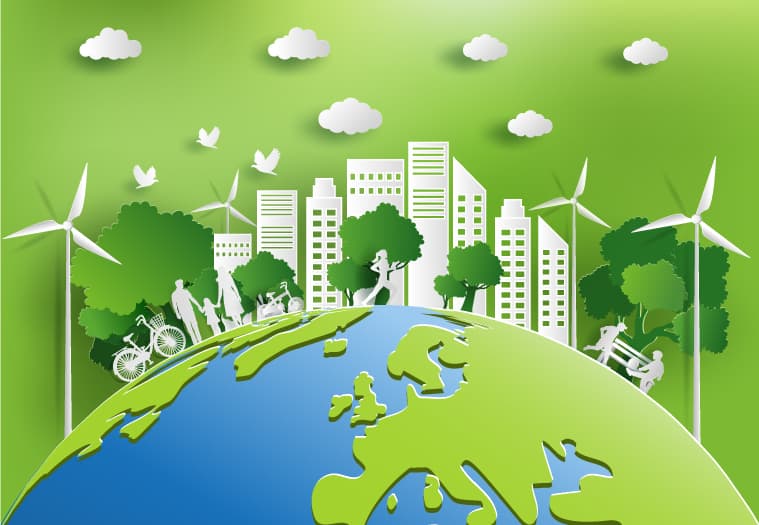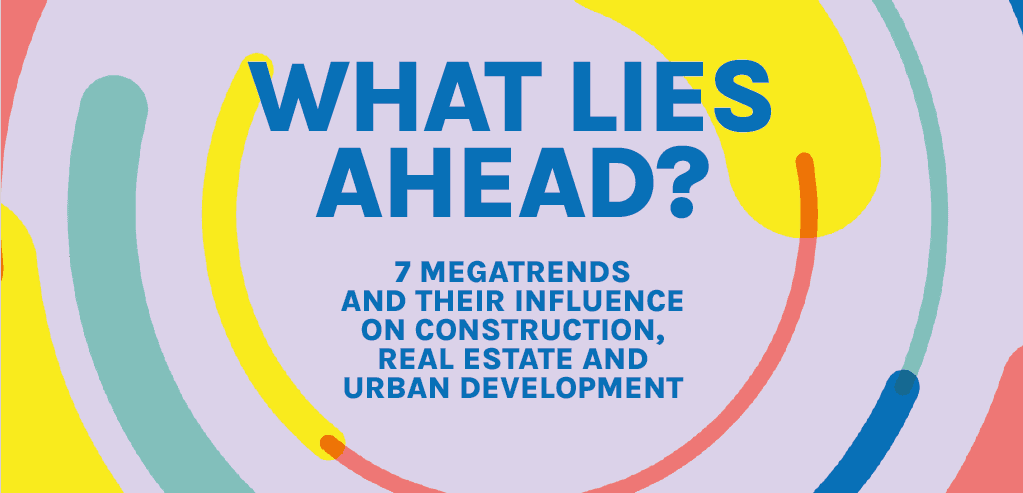
Cities Are Taking Steps to Become Carbon Neutral
4 minutes of reading
Responsible for 67% of global GHG emissions, cities are on the front line of this challenge. Two high-emissions sectors – transport and construction – are of direct concern to them. What are their margins of manoeuvre and trajectories to become low carbon and carbon neutral? What are the major assets of the local scale?

In 2015, the Paris Accord marked the return of an international ambition to combat global warming. In the wake of this, the IPCC clearly and relentlessly translated the concrete efforts to be made to achieve the objective of limiting the rise in average temperature to 1.5 °C compared to pre-industrial levels: reducing greenhouse gas (GHG) emissions by 45% by 2030 and achieving carbon neutrality by 2050. On this date, the quantity of GHG emitted each year in a territory must be equivalent to the quantity of CO2 absorbed by the carbon sinks of this territory (forests, soils, etc.).
Responsible for 67% of global [1]GHG emissions, cities are on the front line of this challenge. Two high-emissions sectors – transport and construction – are of direct concern to them. What are their margins of manoeuvre and trajectories to become low carbon and carbon neutral? What are the major assets of the local scale?
Carbon Neutrality for Cities: from commitment to operational roadmap
In accordance with the commitment made by signing the Paris Accord, States are developing their climate policies and adopting legislative means to achieve carbon neutrality by 2050. In France, the National Low Carbon Strategy sets the carbon budgets and provides guidelines by sector to implement the transition to a low-carbon economy, while the energy-climate law of November 2019 ratifies the objective of carbon neutrality by 2050. While the Paris Accord marked a turning point at the state level, some Cities did not wait for this step to make commitments. Those in Northern Europe, in particular, demonstrated their ambition in this area very early on. As early as the 1990s, the City of Växjö in Sweden was planning to drastically reduce its reliance on fossil fuels. In 2009, it already showed a reduction in its emissions of around 25%. The same year, Copenhagen affirmed its intention to become the first capital in the world with “zero CO2 emissions” by 2025. “When the States are still at the stage of declarations of intent, these cities are already involved in precise operational agendas that are evaluated each year,” analyses the economist and urban planner Jean Haëntjens, in a dossier in the magazine Urbanisme devoted to the low-carbon city. This is all the more true in the United States, where the procedure for withdrawing from the Paris Accord has officially begun and where a coalition of cities, states and companies has taken over and is committed to respecting the terms of the Accord.Carbon-neutral city strategies and projects: examples from Paris and La Rochelle
Today, initiatives are multiplying in the territories. Many cities, such as Paris, Constance (Germany), Madrid, New York, and more recently Strasbourg and Bordeaux, have declared themselves in a “state of climate emergency”. They are stepping up their efforts and can rely on powerful networks, such as the C40 (Cities Climate Leadership Group), to influence the debate. In 2017, a vast prospective and strategic study “Paris is changing era”, commissioned by the municipality of Paris, detailed the trajectory to be followed for the capital to achieve carbon neutrality by 2050: a 70% reduction in gross emissions despite an increase of 200,000 inhabitants, a 10% offset thanks to renewable energies located inside or outside the territory and the capture of the remaining 20% by carbon sinks. To achieve this, the group providing the study (Egis group, representative, associating Quattrolibri, Mana and Egis Conseil) proposed a list of landmark measures to be adopted:- 6 million sq. m. of solar roof panels
- Renovation of up to 75% of the current housing stock
- 150 hectares of urban agriculture
- 75% demitarized or flexitarized in 2050 (diets with reduced animal sources)
- Waste per capita halved
- Half as many cars with twice as many occupants, in shared mode
- Massive shift to electric cars
- 52 car-free weekends per year in 2050
- Transformation of the ring road into an urban boulevard
- 5 times more freight passing through the Seine River
- setting up a local carbon market in the form of a Société coopérative d’intérêt collectif (Scic) to buy or sell carbon credits
- cooperation between companies to reduce and reuse professional materials and waste
- cooperation between public authorities and socio-economic players to act on the items with the highest emissions (transport, construction, waste).
The low-carbon city, a city of economy
These recent projects carry a vision of the low-carbon city that goes beyond a simple carbon-energy approach. From this perspective, the low-carbon city cannot be reduced to a city without fossil fuels. It is based above all on a logic of economy of the territory in all its components (inhabitants, institutions, companies, infrastructures, flows, networks) and which requires in particular:- minimisation of the per capita environmental footprint
- a global approach to building a city in favour of performance in design, construction but also in operation (uses of a district limiting carbon emissions)
- the quest for frugality in urban metabolism (incoming, outgoing or stored flows of goods, construction, waste, food) to limit GHG emissions induced by the functioning of the city over a larger territory.
More reading
Read also




What lies ahead? 7 megatrends and their influence on construction, real estate and urban development
Article
20 minutes of reading

